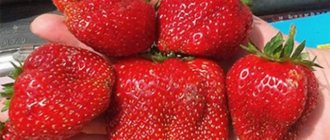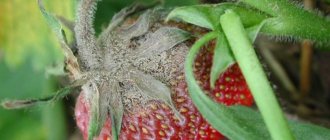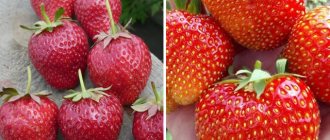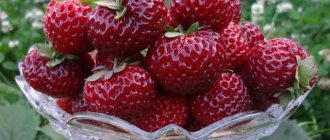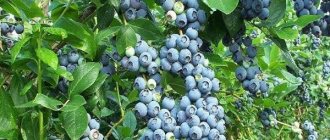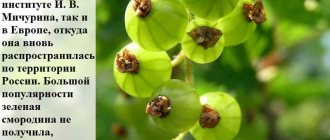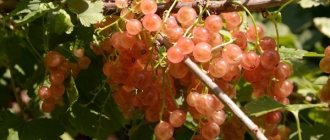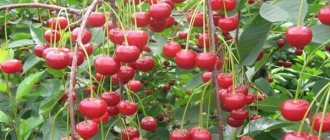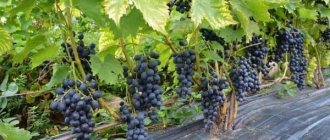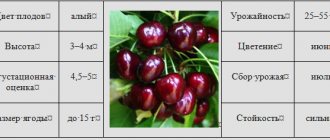Description of the variety
It was created by the Dutch company Vissers in the last century. It is included in the same line of varieties with Vima Zanta, Xima and Tarda, but is directly related only to the last of them. Many Western experts claim that its characteristics are very similar to Selva, so it was most likely used for its selection.
The bushes of this variety of strawberries are very strong and frost-resistant, thanks to which they can withstand winter well. The branches are dense and moderately spreading, with high peduncles and a low level of tendril formation.
Important! If the plant is planted in soil with a high nitrogen content, it will grow much faster and be stronger, but the fruits themselves will be less tasty.
Characteristics of berries and phot
Under normal conditions, Vima Rin berries are characterized by the following features:
- they grow slightly elongated and cone-shaped, mature fruits are quite large, their average weight is 45 g;
- they are painted in a bright red color with a slight glossy tint;
- They are distinguished by good transportability, due to which they are very popular among resellers;
- the pulp has a juicy and dense structure and boasts first-class taste;
- On average, one bush produces slightly less than 1 kg of fruit.
Growing strawberries in greenhouse conditions
In greenhouses or greenhouses, planting occurs in the same way. In a film shelter, fruiting will be more intense and longer than when planted in open ground. If you follow some rules, creating optimal conditions for plants from year to year, the fruiting period will lengthen, the bushes will suffer less and will not suffer from the invasion of insect pests. More fruit will be produced than usual, and the harvest will be more abundant. First of all, Vima Rina strawberries should be provided with regular, abundant watering and fertilizing.
Main features
One of the controversial points is considered to be rather weak whisker formation. Many housewives will even be happy about this factor, because such strawberry bushes are much easier to care for. However, this same feature makes their reproduction much more difficult.
Also, when purchasing this crop, you should remember the following:
- it is considered a late variety: the first berries appear no earlier than July, but they continue to grow until winter frosts;
- the positive qualities of these plants are also considered to be acceptable drought resistance and frost resistance, making them ideal for cultivation in Russia and other CIS countries;
- already in the first year after planting, the bushes begin to bear fruit;
- They continue to bear fruit for 3–4 years, after which the bushes must be replanted.
The history of Vima Rin's strawberry and its description
Vima Rina strawberry is a variety well known among lovers of sweet berries. It is currently considered the best among the Dutch varieties.
The Vima Rina strawberry variety is well known among sweet berry lovers
The originator of Wim Rin is Dutch. The “Vima” series she created includes, in addition to the described variety, 3 more. Despite the fact that the varieties are combined into one series, they differ at the genetic level.
Vima Rina has a strong semi-spreading bush with good foliage. The not very large leaf plate is colored light green. The texture of the leaf is highly ribbed, convex, shiny. The edges are decorated with teeth. The petiole is medium in size, slightly pubescent, the hairs are not appressed.
Vima Rina's strawberry bush grows quite powerful
Flowers are medium in diameter, white. Peduncles grow flush with the leaves. The inflorescences are spreading. The peduncle is long.
The Vima Rina variety is classified as large-fruited. The average weight of a berry is 35–40 g. But specimens can grow almost 2 times larger. The shape of the fruit is cone-shaped, slightly elongated, the neck is well defined. The surface is glossy, strewn with small seeds. Ripe berries are colored red. The flesh is dense, but at the same time tender. The taste is sweet and sour. The taster rating is quite high - 4.8 points out of 5. The aroma of strawberries is pronounced.
Strawberry Vima Rina is a large-fruited variety
Strawberry Vima Rina is a day neutral variety. This means that the plant lays fruit buds every 5-6 weeks. Fruit development takes 14 to 16 days. Day length or weather conditions (temperature can vary from 5 to 300C) do not affect the formation of generative buds.
In Europe, the characteristics of “repairability” and “day neutral variety” are united under one concept – “day neutral varieties”. In Russia, these two characteristics are usually separated, so when describing Vim Rin, confusion sometimes occurs. It is often called a remontant variety.
Characteristics of culture:
- Vima Rina is a late variety. The first wave of berries ripens only in early July, but fruiting continues until frost;
- may enter the fruiting period in the first year after spring planting;
- yield from one bush is about 800 g during the growing season;
- The variety tolerates winter frosts well in the Central region of Russia. Resistance to drought and elevated temperatures is above average;
- in one place the variety feels good for 3–4 years, without reducing the yield;
- resistance to major diseases is at a high level;
- A special feature of the variety is its very weak borer formation. On the one hand, this makes maintenance much easier. But on the other hand, it is a problem for reproduction.
Table: advantages and disadvantages of the Vima Rina variety
| Advantages | Flaws |
| Large fruit and good taste of berries. | The almost complete absence of whiskers makes reproduction difficult. |
| Long fruiting period. | |
| High winter hardiness. | |
| Drought resistance. | |
| Good immunity. | |
| Excellent transportability. |
Recommendations for landing
Vima Rina requires a well-lit landing site with a slight slope in the southwest direction. A sparse shade will not greatly affect the development of the crop, but if it is planted under dense trees or some kind of building, the berries will ripen much later, and will even lose their taste.
You also need to strike a balance between protection from strong winds and stagnant air at the base of the bushes. This can be achieved through decorative planting. A slight airflow of the bushes will also help them in the fight against various fungal diseases.
Important! The better all planting requirements are met, the faster and easier the strawberry seedlings will adapt to a new location.
Particular attention should be paid to planting material; it must meet the following parameters:
- the bushes should already be sufficiently formed and also have at least 3 – 4 leaves;
- the leaves themselves should acquire a bright green color, and there should be no signs of disease or physical damage on their surface;
- The fibrous root system must be at least 7 cm long.
This variety of strawberries can be planted both in autumn and spring. The exact planting dates are individual for each gardener, because they directly depend on the region of his residence and the corresponding climatic conditions.
in spring
Spring planting is naturally considered the best. It usually begins immediately after the snow disappears and the soil warms up to 10 °C. The plant will begin to actively develop immediately after the roots have settled in the new location.
To make the berries juicier and larger, the first flowers that appear should be cut off.
in autumn
You should only resort to autumn planting if you live in a region that is characterized by periodically returning frosts in the spring.
This planting is carried out at the end of summer or beginning of autumn, the main thing is to do it before the first frosts appear. Otherwise, Vima Rina will not have time to get stronger and will become too vulnerable to cold weather.
general information
Before planting (both spring and autumn), the soil should be dug to a depth of 25 - 30 cm, while removing the roots of previous plants. After digging the soil, it should be fertilized with manure or compost: there should be 5–8 kg of organic fertilizer per square meter.
Well, before replanting, the soil will need to be thoroughly loosened and leveled.
Important! Vima Rina will be very happy about the plot where carrots, radishes or dill used to grow. And the best neighbor for all types of strawberries is garlic, which repels most pests. You should avoid areas that previously had potatoes, tomatoes or eggplant.
Landing specifics
It is advisable to plant seedlings in a sunny area, from the southwest; the place should not be exposed to drafts. Vima Rina's strawberries do not require any other special features of growing strawberries; planting and care are carried out according to the standard scheme.
Necessary climatic conditions for the Vima Rina variety
Strawberry seedlings should be planted when the air temperature remains stable at +10 degrees. There should be no threat of frost returning. It is optimal to plant bushes in regions with a warm climate in the garden, and in regions where frosty winters prevail - in a greenhouse.
Predecessors and neighbors of berry culture
The optimal predecessors of strawberries include legumes, cereals, onions, garlic, carrots, and radishes.
You cannot plant bushes after cabbage, pumpkin, Jerusalem artichoke, and the Buttercup family.
Preparing the site and seedlings
2 weeks before planting, prepare the soil: plow with a shovel, break up lumps, remove weeds. Afterwards, organic matter or mineral compounds are added, forming beds. It is advisable to buy seedlings with 3-4 leaves, without signs of damage or disease. The rhizome should be fibrous, 7 cm long.
Disembarkation dates and rules
You can plant Vima Rina strawberries in spring or autumn, it all depends on the climate of the region. If frosts often return in the spring in the area, it is better to plant seedlings in late August or September.
From the beginning of April until the first days of May, seedlings are planted mainly in the South.
A hole is dug 2-3 days before the planned planting date, with a diameter of 45 cm, the distance between the beds is 40-70 cm. A replenishment of potassium nitrate and superphosphate is added to each hole, and it is connected to the soil so as not to harm the rhizome.
Basic rules of care
Successful planting of a plant does not mean that you can stop caring for it. If certain requirements are not met, you cannot count on a good harvest:
- Due to the shallow root system, Vima Rina cannot absorb moisture from the deep layers of the soil, and therefore she needs help with this. In spring, the soil should be moistened at least 6 times a month, and in late summer - no more than twice;
- Watering is best done in the early morning or evening, and use only warm water;
- Mulching is a mandatory procedure when growing strawberries. For this, dried grass or wheat straw is usually used. In mulched soil, moisture is retained much longer and it will not need to be loosened and weeded as often;
- high-quality fertilizing will help achieve even greater yields from Vima Rin. You can use a wide variety of materials for this. The main thing to remember is the mandatory alternation of mineral and organic fertilizers.
Harvesting and storing strawberries
Harvesting takes place early in the morning when the dew has dried. This process can also be postponed until the evening, but the berries must cool from the sun. Picked strawberries are placed in birch bark boxes or wicker baskets. It is better to pick the berries with a tail so that they do not flow. Damaged fruits are sent for processing.
Strawberries have dense pulp, so they are suitable for transportation over long distances. The berries are stored in the refrigerator for 4-5 days. The variety can also be stored longer if the strawberries are frozen. In addition, jam, candied fruits, jellies and compotes are made from it.
Berries consumed fresh have more benefits for the human body. If you want to preserve vitamins and microelements as much as possible, rub the berries with sugar. This way they will last until spring.
Diseases and pests
This strawberry variety has fairly reliable immunity, however, in difficult climatic conditions or with insufficient care, it can still be susceptible to some diseases:
- gray rot. When it occurs, the berries become covered with a thin gray fluff, and then begin to rot. Fukzalin and Thiram are excellent for combating this disease;
- white spotting. This disease can be identified by small white spots that appear on leaves, peduncles and petioles. Over time, the spots merge and lead to drying out of the bush. To combat this scourge, you can use an iodine solution (50 ml per 10 liters of water), while cutting off the infected areas of the plant;
- earth mite This is a small insect that sucks juices and nutrients from the crop. The consequence of their activity is small holes on the surface of the leaf, which contribute to their death. The best results in exterminating them are shown by the drug Bitoxibacillin.
Important! It is much easier to prevent the occurrence of diseases and pests than to fight them later. So it is better to follow all the basic rules for caring for strawberries and keep your beds clean.
Reviews from gardeners
On the Internet you can find many reviews about Vima Rina.
Oksana: “Already in the first summer we managed to get a huge harvest of strawberries! My youngest son especially liked it, and he devoured it almost every day. However, the next year, for some reason, the bushes quickly grew old, and new ones had to be planted.”
Renat: “This variety became popular for a reason. In addition to its excellent taste, it also tolerates winter frosts well and does not require excessive care. I can recommend purchasing it even for complete beginners in gardening.”
However, not all people were delighted with this variety. For example, in reviews on one of the online stores, Lyudmila reports:
“Last year I decided to try this variety for the first time, having heard a lot of positive reviews on the Internet. Well, this variety is really not the worst, but reviews about its taste are very exaggerated. And I didn’t manage to harvest a big harvest in the first year.”
Reviews
Anton, 47 years old, Perm region
Of all the Dutch strawberries, “Vima” Rina is my favorite. Since it is remontant, the berries can be collected almost from the beginning of summer until frost. In autumn, of course, they are not so sweet, but still fragrant and tender, sweet and sour. For the winter in OG we cover the bushes with pine spruce branches. It has been wintering safely for three years now. In summer it tolerates heat and short droughts well. There are almost no diseases on it. We ordered seedlings from Yekaterinburg, 10 frigo seedlings in total. Everything took root well, the bushes grew strong and powerful. They produce little mustache and started only in the second year, but we root all the young rosettes in pots and gradually expand our plantation.
Svetlana, 60 years old, Moscow region
Vima Rina is a good remontant strawberry variety for open ground. Not too capricious, resistant to frost and drought, diseases and pests. If you feed normally, the bushes do not degenerate after the first season, and even increase productivity in the second or third year. The berries are quite large, the first ones sometimes grow up to 50-60 g. In terms of taste, in my opinion, they are inferior to traditional short-day varieties, but very beautiful - all are smooth, bright red, clean, and are rarely affected by gray rot. It’s a pleasure to eat such a berry, and it’s good in any dessert. I will definitely make jam from these strawberries for my grandchildren. Although the pulp is not very dense, whole berries retain their shape well and do not fall apart.
Victoria, 52 years old, Kharkov
I didn’t like Rina’s strawberries: they tasted too sour and had little flavor. The berries ripen unevenly, and the yield is very average. I will refuse this variety.
Nikolay, 44 years old, Bobruisk
There is always a lot of hassle with remontant strawberries. We have tried growing different day neutral varieties (Albion, Queen Elizabeth, etc.) but have now settled on Vima Rina. She almost never throws out her whiskers, so she doesn’t have to constantly tear them off. During the season we feed the bushes with slurry, ash, and nettle infusion. We installed drip irrigation and mulched the ground with a dense layer of straw. Therefore, we do without loosening and weeding. And the berries turn out clean and very rarely spoil. Rina differs from other remontant varieties in its delicate berry pulp (in Albion it even crunches) and in its yield (about 1 kg per bush per season). Even unripe autumn berries are sweeter. Last year we took the last ones when the snow had already fallen.
Irina, 58 years old, Lipetsk
At our dacha, the Vima Rin strawberry bushes grew to enormous sizes, and throughout the first year they were almost constantly full of large berries. Due to this, they became so “exhausted” that next spring they didn’t even grow leaves. We planted a small number of daughter rosettes and completely renewed the bed. The young bushes took a long time to take root and did not bear fruit in the summer. I hope that the new season will please us with an excellent harvest of sweet, juicy berries.
